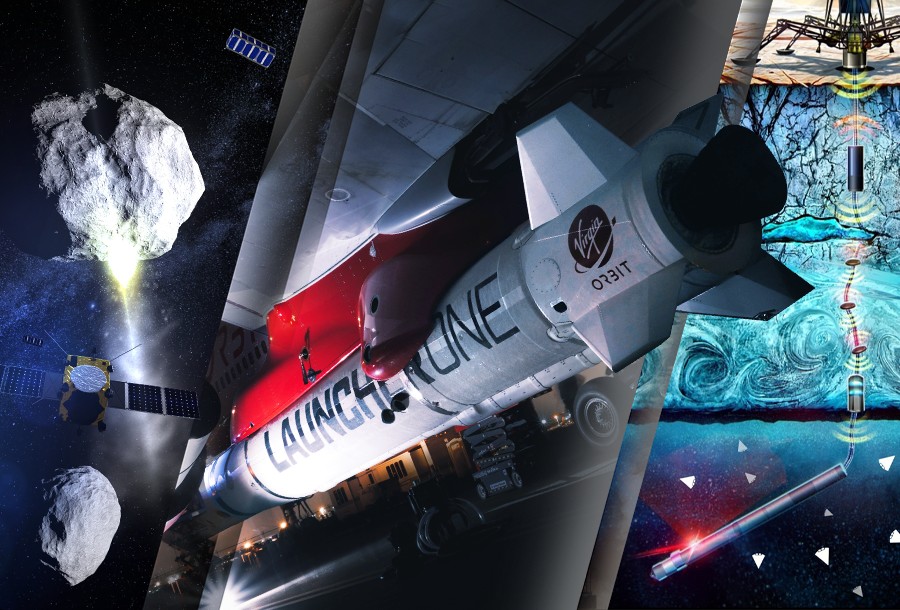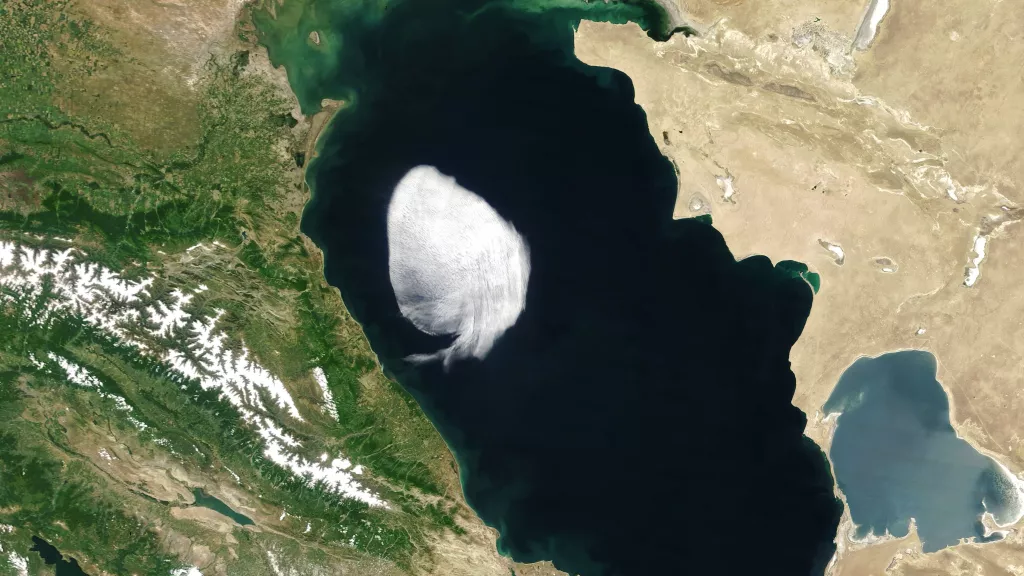Selection of the most interesting space news for breakfast: NASA has become one step closer to discovering ancient microbial life on Mars. Virgin Orbit wants to increase the number of launches, scientists have simulated the consequences of the collision of the DART spacecraft with an asteroid.

- NASA is one step closer to finding ancient microbial life on Mars
- Rogozin wanted to scare NATO with images of “decision-making centers”, but something went wrong
- Tianwen-1 completed mapping of Mars
- Virgin Orbit ready for first night launch
- Sierra Space signs agreement with Turkish Space Agency
- Space Force acquisition chief to meet with ULA and Blue Origin, expects Vulcan to launch in December
- Inmarsat Launches New BGAN Connectivity Solution in the Middle East
- ICEYE’s new business will offer complete SAR missions for customers
- Strange cloud in satellite data catches interest of scientists
- Researchers simulate defense of the Earth against asteroid impact
- Swarm of tiny swimming robots could look for life on distant worlds
- Shuttered full-scale space station mockup finds new use with Axiom Space
NASA is one step closer to finding ancient microbial life on Mars
Scientists using data from NASA’s Curiosity rover measured the total organic carbon in Martian rocks for the very first time, a press statement reveals. Their results showed that there is an abundance of this key ingredient for life on the red planet.
Organic carbon — carbon bound to a hydrogen atom — is the basis for organic molecules and it is used by all known life forms. While the new measurement of organic carbon on Mars doesn’t prove the existence of life on the red planet, it does provide an indication that the conditions on Mars may have once been suitable for life to grow on the planet.
Rogozin wanted to scare NATO with images of “decision-making centers”, but something went wrong
Roscosmos released satellite images of important facilities in many countries in order to scare NATO countries. Apparently, the Russian agency planned in this way to show that it was watching the alliance members closely.
A characteristic feature of all images is the inscription “Shooting Resource-P. All rights reserved. Roscosmos 2022”. It immediately becomes clear that you have at least a few months of latest data, but in practice it turns out that the age of some pictures is 4 years or more.
Tianwen-1 completed mapping of Mars
The Chinese National Space Administration (CNSA) announced that the Tianwen-1 spacecraft has completed mapping the Martian surface. This means that it has achieved all the goals of its mission. According to CNSA representatives, Tianwen-1 will continue to observe Mars. The device will also be used to test on-board equipment and test the technology of air braking, which in the future will be used in the mission to deliver samples of Martian soil to Earth.
Market News

Virgin Orbit ready for first night launch
Virgin Orbit says it’s ready for a nighttime launch for the U.S. Space Force as it attempts to get into a more frequent rhythm of building and launching vehicles. Virgin Orbit executives said at a briefing that their LauncherOne system was set for its fifth orbital launch attempt, a mission called “Straight Up” by the company. Its Boeing 747 aircraft that serves as a launch platform is scheduled to take off from Mojave Air and Space Port in California at 1 a.m. Eastern June 30.
Sierra Space signs agreement with Turkish Space Agency
Sierra Space said it signed a memorandum of cooperation with the Turkish Space Agency and ESEN Sistem Entegrasyon, a Turkish company affiliated with Sierra Nevada Corporation, spanning a broad range of potential partnerships among the organizations that could include use of Sierra Space’s Dream Chaser spacecraft and inflatable modules it is developing for the Orbital Reef space station.
Space Force acquisition chief to meet with ULA and Blue Origin, expects Vulcan to launch in December
U.S. Space Force acquisition executive Frank Calvelli this week will visit United Launch Alliance’s factory in Decatur, Alabama, and get an update on the company’s new Vulcan Centaur rocket, a vehicle that the U.S. military has invested in and expects to use to launch national security satellites.
Calvelli, who has been on the job for less than two months, told reporters at the Pentagon June 28 that he is aware of the delays in the development of Vulcan’s main engine, Blue Origin’s BE-4, and that is why he decided to put ULA and Blue Origin on this travel schedule sooner rather than later.
Inmarsat Launches New BGAN Connectivity Solution in the Middle East
Inmarsat has unveiled a new connectivity solution alongside Hytera, Global Beam Telecom and Cobham Satcom to serve businesses in the Middle East. Inmarsat announced the push-to-talk (PTT) offering, BGAN PRISM PTT+, June 28. This satellite-enhanced connectivity solution, now available through Hytera mobile radios, aims to help businesses overcome coverage redundancy and downtime associated with traditional radio systems.
ICEYE’s new business will offer complete SAR missions for customers
ICEYE has established a new line of business that is focused solely on delivering fully operational satellite missions to customers looking for their own orbital SAR capabilities.
Governments and large multinational corporations are able to purchase their own radar imaging satellites from ICEYE and operate them independently, or arrange ICEYE to manage the spacecraft exclusively on their behalf.
Interesting

Strange cloud in satellite data catches interest of scientists
The small stratocumulus cloud has a complex origin story. A “peculiar” cloud, as NASA terms it, was found over the Caspian Sea on May 28. The cloud offers an interesting case study of how satellites can detect such phenomena in Earth’s atmosphere.
Scientists used NASA’s Terra satellite to watch the cloud as it moved towards land and then dissipated in order to learn more about how small stratocumulus features like this one form.
Stratocumulus clouds tend to be clumped together at low altitudes in the atmosphere; this one was spotted at about 1,500 meters above Earth’s surface. What made it really stand out in new images captured by Terra’s Moderate Resolution Imaging Spectroradiometer (MODIS), however, was the cloud’s hard boundary.
Researchers simulate defense of the Earth against asteroid impact
NASA’s Double Asteroid Redirection Test (DART) mission is the world’s first full-scale planetary defense test against potential asteroid impacts on Earth. Researchers of the University of Bern and the National Center of Competence in Research (NCCR) PlanetS now show that instead of leaving behind a relatively small crater, the impact of the DART spacecraft on its target could leave the asteroid near unrecognizable.
Last November, the DART space probe of the U.S. space agency NASA was launched as a first full-scale experiment of such a maneuver: Its mission is to collide with an asteroid and to deflect it from its orbit, in order to provide valuable information for the development of such a planetary defense system.
Swarm of tiny swimming robots could look for life on distant worlds
Someday, a swarm of cellphone-size robots could whisk through the water beneath the miles-thick icy shell of Jupiter’s moon Europa or Saturn’s moon Enceladus, looking for signs of alien life. Packed inside a narrow ice-melting probe that would tunnel through the frozen crust, the tiny robots would be released underwater, swimming far from their mothercraft to take the measure of a new world.
That’s the vision of Ethan Schaler, a robotics mechanical engineer at NASA’s Jet Propulsion Laboratory in Southern California, whose Sensing With Independent Micro-Swimmers (SWIM) concept was recently awarded $600,000 in Phase II funding from the NASA Innovative Advanced Concepts (NIAC) program. The funding, which follows his 2021 award of $125,000 in Phase I NIAC funding to study feasibility and design options, will allow him and his team to make and test 3D-printed prototypes over the next two years.
Shuttered full-scale space station mockup finds new use with Axiom Space
A Houston company building a commercial orbital outpost has found the perfect place to move: a sprawling facility that comes pre-equipped with a full-scale mockup of the International Space Station(opens in new tab) (ISS).
Axiom Space, which has a contract with NASA to test components of its planned Axiom Station at the International Space Station, has leased the former location of Fry’s Electronics in Webster, Texas to house its engineering operations. The former big-box retail store, which closed when the national chain went out of business in 2021, is unique for its football-field-long representation of the ISS.
Follow us on Twitter to get the most interesting space news in time
https://twitter.com/ust_magazine
